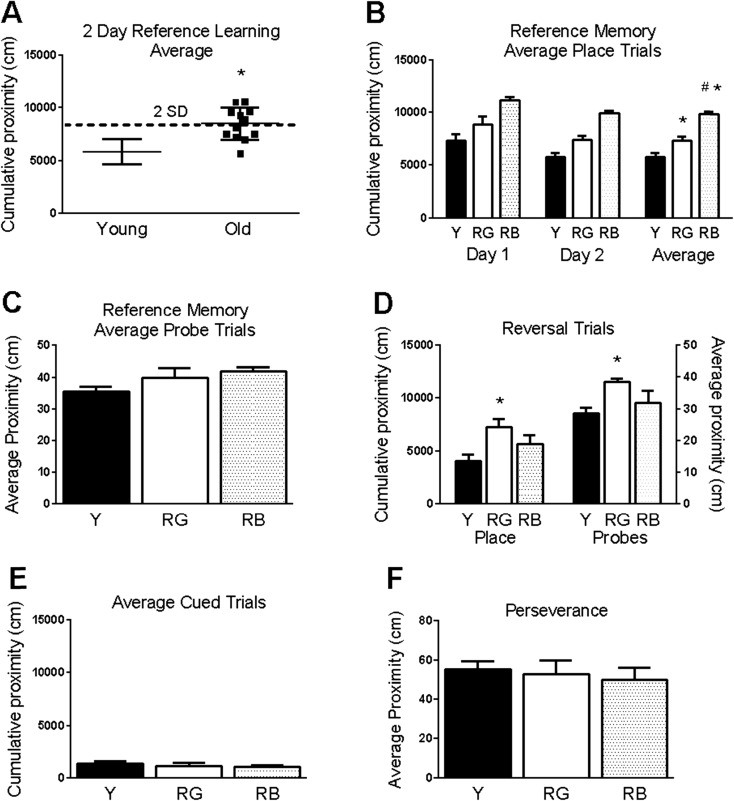Fig. 1.
Behavioral testing. Aged mice have significantly poorer reference memory than young mice. a Old mice were separated based on acquisition of reference memory in place trials; bad old learners (RB) were >2 standard deviations (SD) above the young mean. b, c Significant differences in reference memory acquisition (b) but not in probe trials (c). d Significant differences were seen in averaged place and probe reversal trials. e–f No significance differences were seen in cued trials (e) or reversal perseverance for the old platform location (f). Asterisk indicates p < .05 for difference of from young. Number sign indicates p < .05 for difference of from RG (ANOVA and Fisher’s PLSD). Data = mean ± SEM. Y = young (N = 11). RG = old Reference memory-Good (N = 7). RB = old Reference memory-Bad (N = 5)

